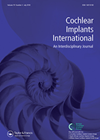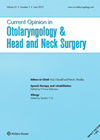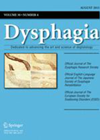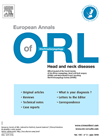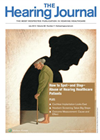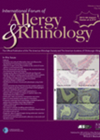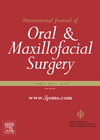
Journal Reviews archive for November 2015
‘FOX’ – a new software programme in cochlear implant fitting for audiologists
Taking into account the complex parameters involved in cochlear implant fitting, it appears that the procedure is becoming more and more difficult and variable across cochlear implant centres. For this reason, a software programme called FOX was designed attempting to...
Another comparison of stapedial reflex thresholds and comfort levels in implantees
Many studies in the past have attempted to correlate electrical stapedius reflex threshold (eSRT) and comfort levels in implantees, mainly to assist fitting in young children or adults with difficulties in cooperation with audiologists. The present study assessed 11 adult...
Immunotherapy – could it be cheaper?
Immunotherapy is the only treatment for allergy to alter the disease course. Limited data exist on direct and indirect costs of subcutaneous (SCIT) and sublingual (SLIT) immunotherapy in America. This article assesses the cost effectiveness worldwide of the two immunotherapies....
Tricky post-laryngectomy swallows
Despite improvements in chemoradiation therapy and the adoption of organ preservation for some head and neck cancers, total laryngectomy remains the treatment often providing best survival chances for advanced laryngeal cancer. This article reviews the causes of dysphagia post-laryngectomy and...
The right kit matters… How important is video recording in FEES?
As a portable alternative to videofluoroscopy, fibreoptic endoscopic evaluation of swallowing (FEES) is often carried out at the patient’s bedside. The authors of this paper have chosen to examine the reliability of the penetration-aspiration ratings (Rosenbek scale) of FEES examinations...
Aerosols and polypi
Infection in the operative cavities after endoscopic sinus surgery for sinonasal polyposis leads to recurrence of symptoms and mucopurulent discharge. The usual therapies include systemic antibiotics sometimes with steroids. The authors hypothesised that the use of a topical antimicrobial (tobramycin...
Role of potassium channel opener in salicylate induced tinnitus
The exact mechanism in the origin of tinnitus is not known. Many pharmacological agents have been tried to to treat tinnitus without great success. Aspirin is a commonly used medicine in the elderly population to reduce the risk of stroke...
Outcome measures for hearing loss
This short editorial explores some possible options in measurement of quality of care in audiology. We traditionally tend to use clinician-related outcomes in place of patient-reported outcome measures and so we could miss a wealth of data on the impact...
Measuring is understanding: an unsupervised PROM clustering of CRS patients
It has been clear for quite some years, at least for anyone dealing daily with chronic rhinosinusitis (CRS) patients, that CRS is an ‘umbrella’ diagnosis. There are significant differences between patients, including different demographic data, different endoscopic and radiographic images,...
Getting your nose dry: endoscopic vidian neurectomy – an old technique given new life
We are often faced with patients with intractable watery rhinorhea – patients with no demonstrable allergy, a diagnosis of NAR and no response to ipratropium or capsaicine. For such patients, vidian neurectomy has been devised – an old technique that...
Intermediate risk factors SCC tongue
This retrospective review from Japan assessed 89 patients who underwent surgery for squamous cell carcinoma of the tongue, specifically they reviewed the evidence of perineural and vascular invasion (27.0% and 23.6%). Their results suggest, not unsurprisingly, that perineural and vascular...
No difference upper or lower lip
This is a retrospective review from the Netherlands over a 20-year period to 2009 of squamous cell carcinoma (SCC) of the lip. In total, 979 cases of the lower lip were identified and 126 of the upper lip, with men...

